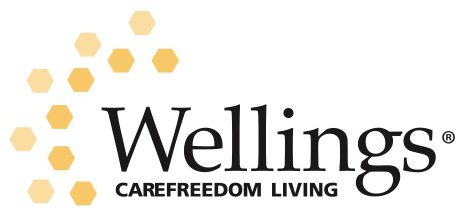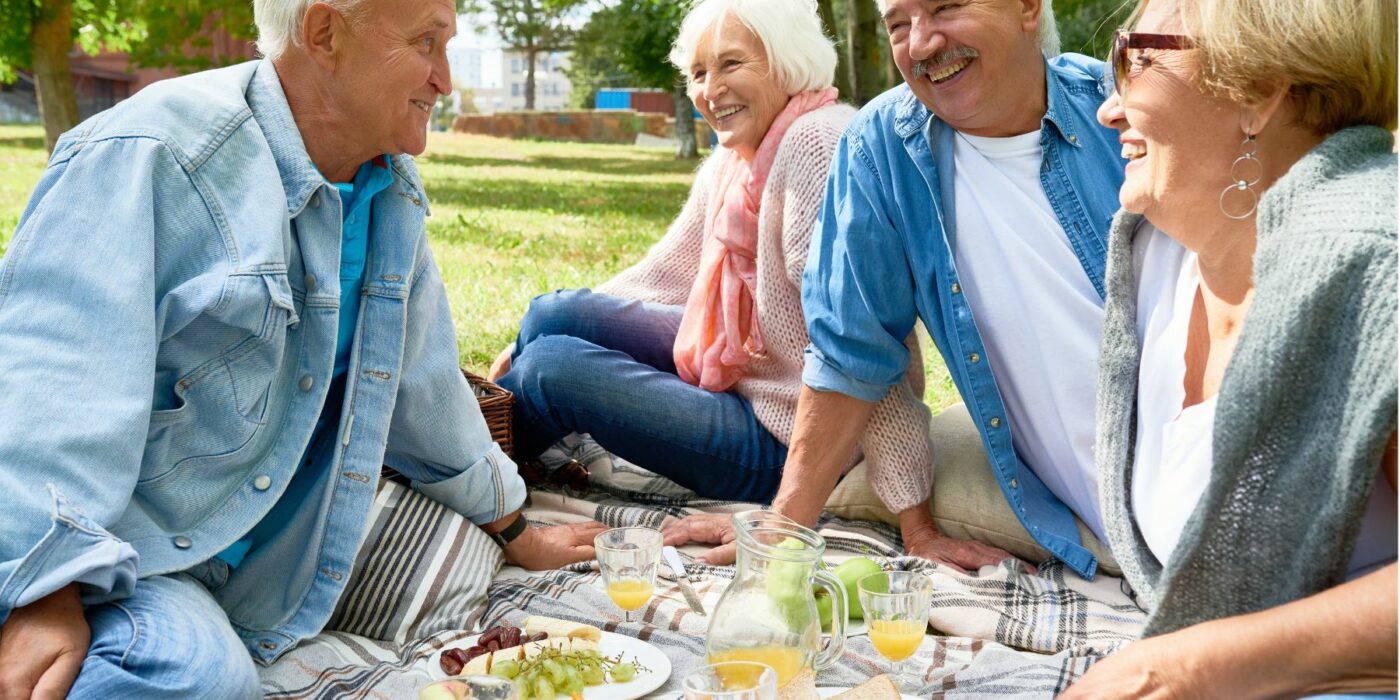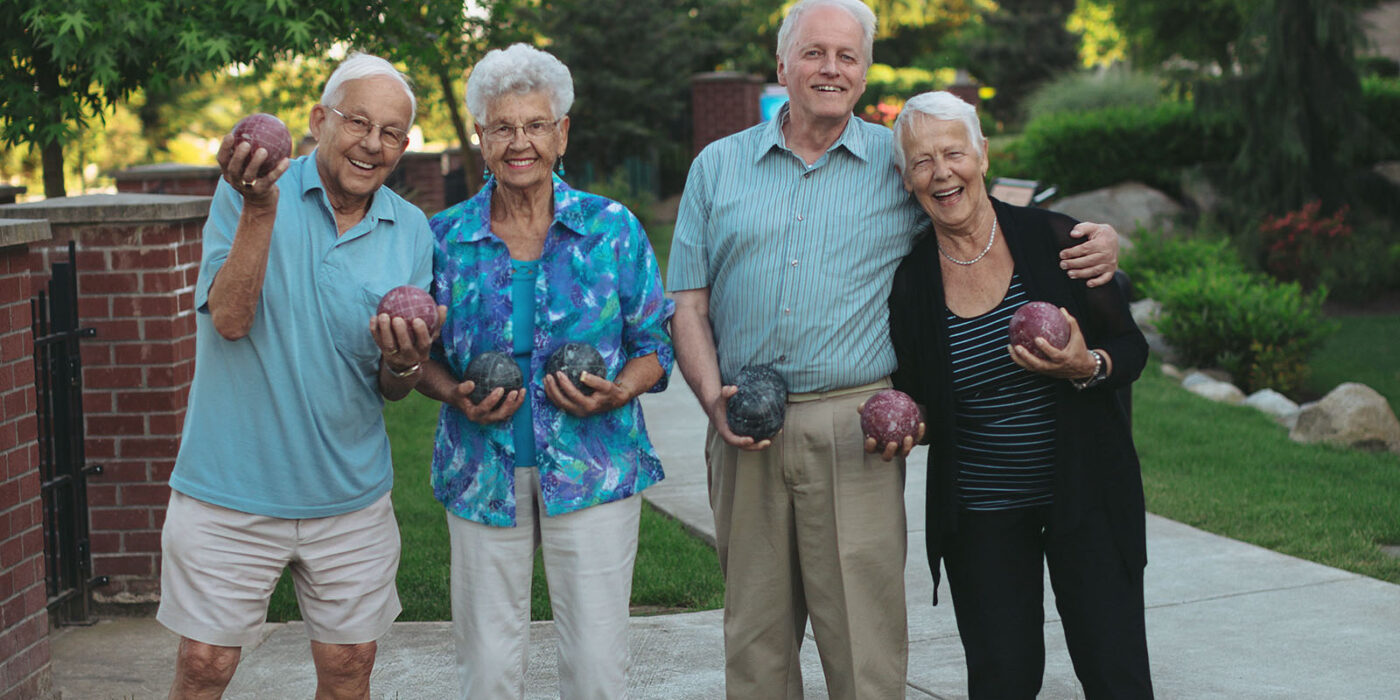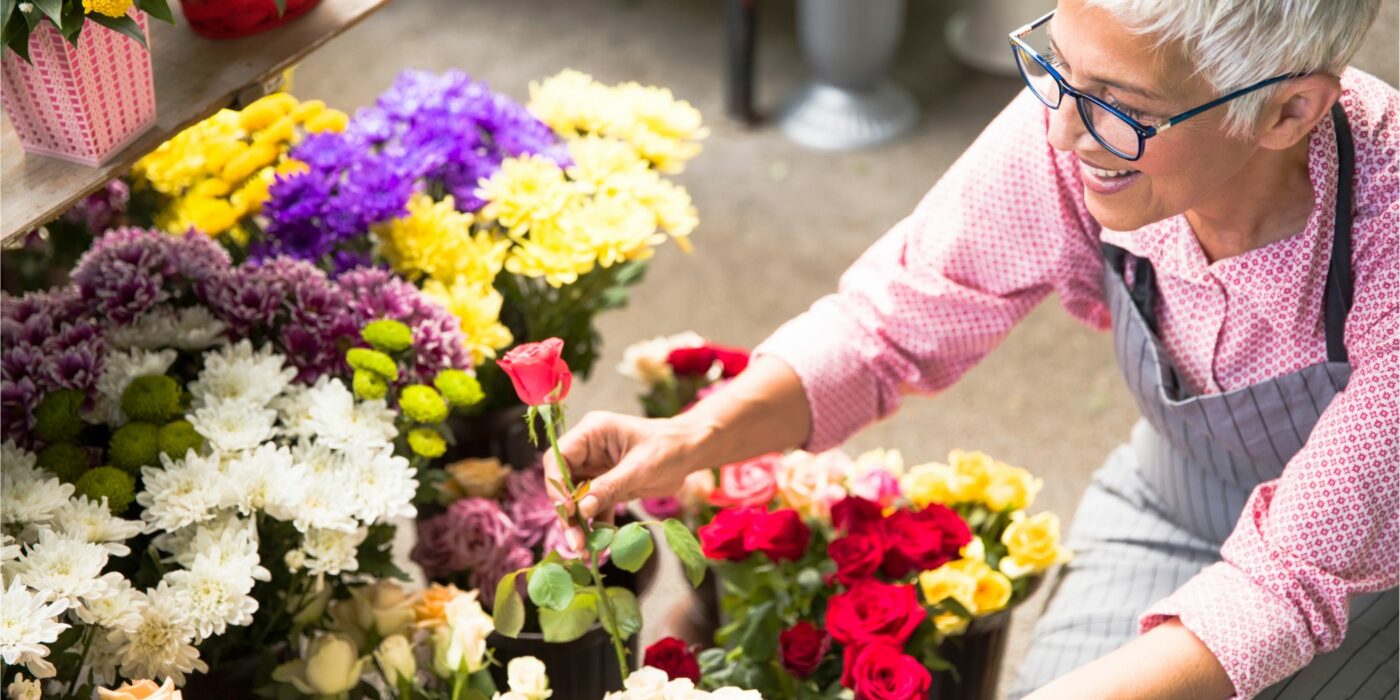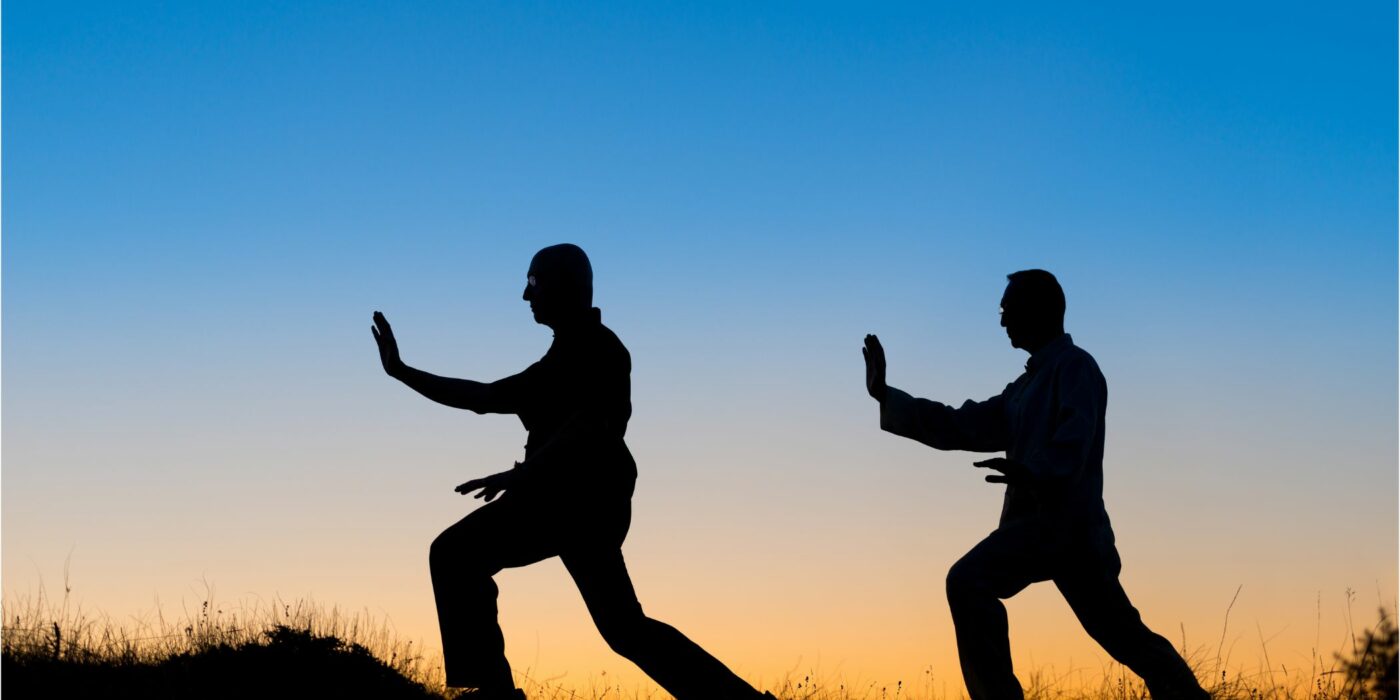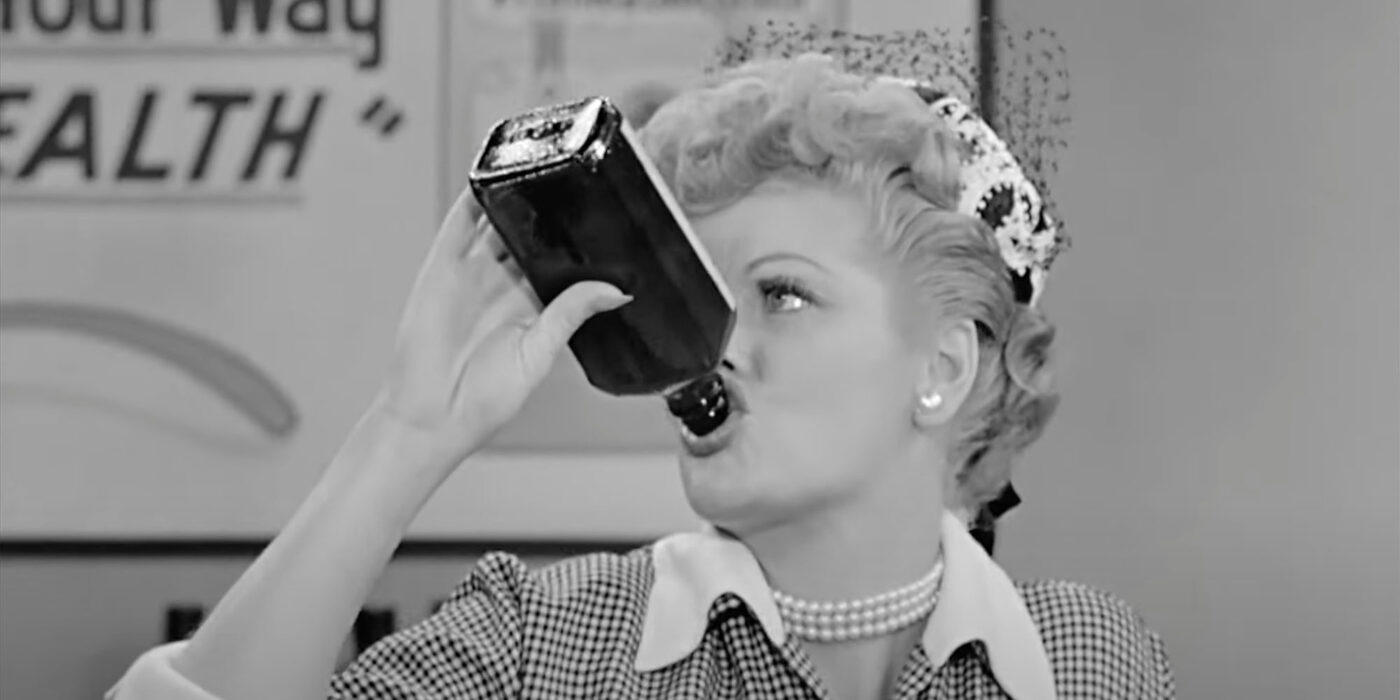The Game of Fitting in Versus The Feeling of Belonging
Have you ever felt like you didn’t fit in? I know I did in school, in some workplaces even in some friend circles. As I was trying to fit in, I felt unsure because I didn’t listen to myself. I looked to others for cues on how to behave and what to say. I felt lost and I’m pretty sure I’m not alone. We are conditioned (I say conned) into believing that if we work hard to fit in, we will be rewarded by being accepted. We are social creatures, and we need to know that we matter to our tribe. We all want to feel accepted.
I like to remind people that we are all important and we matter but for some of us, it’s a stretch to really believe that because we’ve habitually modified our behaviour to try to fit in or we’ve put others needs before our own, so we don’t see how important we are; we don’t see that we matter. We need to recognize that belonging is different from fitting in. It takes courage and effort in the unlearning, to understand that being ourselves is the secret to belonging.
“Fitting in is about assessing a situation and becoming who you need to be to be accepted. Belonging, on the other hand, doesn’t require us to change who we are; it requires us to be who we are.”– Dr. Brene Brown PhD
I just finished reading media personality Paris Hilton’s memoir. When I saw the book, my first thought was that she’s too young, followed by she’s so privileged, why would anyone want to read about her experience? I was curious; I bought the book and I’m so glad I did. The great-granddaughter of Conrad Hilton, founder of Hilton Hotels has a reputation as a privileged wild child with a very rebellious spirit……that’s all I knew about her until I read the book. Her parents Kathy and Richard wanted Paris to fit in when her behaviour was taking her off the path, they had in mind for her as a Hilton. They tried everything they could to protect her but nothing stuck. Finally, they had her kidnapped in the middle of the night by two thugs, who transported her to a wilderness school for troubled kids, in the middle of nowhere California. She ran away, was captured, and was sent to another even more remote and wild so-called school.
It was all her parents could think of doing, to keep her safe and while it was done with good intentions, nobody caught that Paris had ADHD (attention deficit hyperactivity disorder). Her brain operates differently; she was not meant to fit in. She received the diagnosis around age 20; with treatment, the pieces fell together, and Paris soared. Her mind is hyper creative, she’s accomplished a lot and thanks to the humiliation she experienced at the wilderness camps for troubled kids, the paparazzi following her every move doesn’t scare her. In fact, Paris knows how to cooperate and make the relationship with the media work for everyone’s benefit. She belongs in the spotlight and the world accepts her there. Paris, just like all of us, was not meant to fit in; she was meant to be her true self. When we’re authentically ourselves, we’re not looking to fit it, we’re finding where we belong.
“If we have no peace, it is because we have forgotten that we belong to each other.”-Mother Teresa
Dr. Brene Brown PhD, an American professor, author, and researcher has spent decades studying courage, vulnerability, shame, and empathy. She talks about the contrast between belonging and acceptance. Acceptance relies on others recognizing us, which is unpredictable at best, whereas belonging comes from within ourselves, as we get to know who we really are. In the process of getting to know ourselves, we learn about our strengths and our gifts; we develop confidence. Trying to fit in makes us feel unstable because it’s dependent on other people’s approval, while belonging feels solid.
If you want to deepen your sense of belonging instead of struggling to fit in, here are a few suggestions to try.
-Experiment with new things. When we step outside of what we consider our normal habits we always learn something, whether it’s discovering a new hobby or it’s that what we’re trying is not for us. If there’s something you’ve always wanted to do, start somewhere by researching or taking a class on the subject. We are never too old to learn, to dream, to experiment and to grow.
-Ask yourself what makes you feel connected to others. Is it your love of books or movies, your interest in history, food, flowers, or music? Look for groups in person or on-line to explore, learn and connect with like-minded folks.
-Be courageous. Say hello to your neighbours. Meet new people. Start conversations by asking people about themselves and really listening to what they have to say. You might be surprised by how much we have in common. We’re all human beings going through this life adventure with its high peaks and deep valleys.
-Be kind. We need to learn to be kind toward ourselves first because we’re human and life is challenging. When we learn to treat ourselves with kindness, it becomes easier to treat other people with kindness and graciously receive kindness when it’s offered to us. Our acts of kindness may seem innocent, but kindness is the perfect expression of belonging. It implies that we have enough within ourselves and can happily share with others to elevate their day.
In her book The Gifts of Imperfection, Dr. Brene Brown teaches us that the greatest barrier to belonging is fitting in. She reminds us that while there are over seven million people on planet earth, there is only one you and you belong just as you are. You have experiences and knowledge that are yours alone; no one else on earth can be you. It’s the most beautiful reminder that you are important, and you matter whether it’s your home life, your work life, or your friend circle. Once you understand this truth, you’ll never need to fit in again.
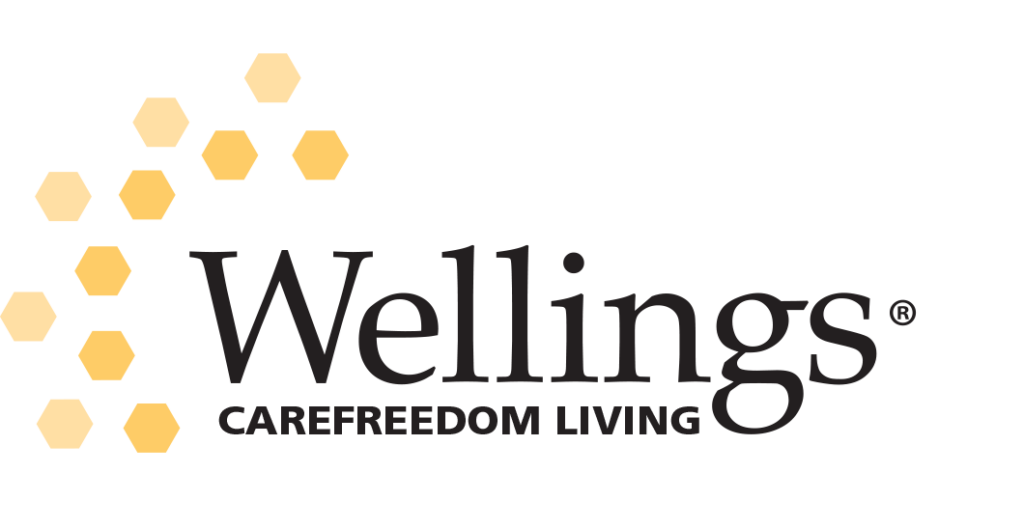
This Wellings blog by Kathie Donovan was exclusively written for Wellings Communities and appeared first on MyWellings.com.
Spring Clean Your Beneficiary Choices
Keeping your beneficiaries list up to date and current is important for many reasons.
This month KenMar Partner Marci Perreault shares some reasoning as to why this is an important step in planning and updating your Will if your circumstances change.
If you need any guidance or further explanation, please give Marci a call.
Marci Perreault, FLMI, CHS, CFP
Certified Financial Planner
KenMar Financial Services
Assante Financial Management Ltd.
Suite 300, 68 Chamberlain Ave
Ottawa ON K1S 1V9
Phone 613-231-7700 EXT 223
FAX 613-231-7744
Mutual Funds provided through Assante Financial Management Ltd.
Spring Clean Your Beneficiary Choices
Say that the holder of a Registered Retirement Savings Plan (RRSP) names their spouse as the beneficiary. Later, the couple divorces. The RRSP holder removes their ex-spouse from their will. However, with all the activity surrounding the divorce, they neglect to change the RRSP beneficiary designation from their ex-spouse to their child.
If the RRSP holder passes away before converting the plan to a Registered Retirement Income Fund (RRIF), the RRSP assets could go to the ex-spouse. It gets worse. The tax liability on the RRSP assets, equal to about half their value, must be paid by the estate, leaving even less for the child.
This scenario shows the need to ensure your beneficiary designations are all up to date.
Keep a beneficiary record
To begin, it’s helpful to keep an online or paper record of beneficiaries that you specified in your will and designated for all relevant financial vehicles. These may include an RRSP, RRIF, Tax-Free Savings Account (TFSA), Registered Education Savings Plan (RESP), life insurance policy or segregated fund.
Note that for registered plans, the beneficiary can be designated on the registered plan documentation in provinces other than Quebec. Residents of Quebec name their legatee (beneficiary) for each registered account in their will, not on the account form—with one exception. A legatee can be named on the form when the investment is an eligible insurance product, such as a segregated fund.
When to make a change
The most common reason to add or change a beneficiary is when you or someone in your family has a significant change in their life. Events or situations could be marriage, divorce, birth or adoption of a child, or the passing of a loved one. For example, someone remarries and names their new spouse as the beneficiary of their RRSP. Or an individual has a new grandchild and updates their will to add the grandchild as a beneficiary, also establishing a trust. Ideally, you update your beneficiary designations when the event arises. However, reviewing your choices from time to time allows you to catch any changes you may have overlooked.
Also, changes in your or a beneficiary’s financial situation or updates to your estate plan can call for a beneficiary review. Maybe a parent designated both children as beneficiaries of a vacation property, but recently one child moved out of the province—so there’s a decision to make. Or perhaps a retiree has a permanent life insurance policy no longer needed to protect the family, so they change the beneficiary from their spouse to a charity.
Changes to beneficiaries may be needed for a variety of reasons, including ones that are unique to your situation. Be sure to keep a record of your beneficiaries, and don’t wait too long before conducting a review.
How to Be There for Someone Going Through a Rough Time
We’ve all found ourselves in a situation where the wheels come off unexpectedly for someone we care about. What do we do? What can we say? Because there’s no handbook on the subject, sometimes we feel so awkward, we do nothing. It’s in our nature to want comfort from others and to comfort people we care about when things go sideways. Let’s try to cut through the awkwardness so we can feel empowered to take meaningful action and be supportive.
“Promise me you’ll always remember that you’re braver than you believe, stronger than you seem, and smarter than you think.” -A.A. Milne
Connection and community are key elements of what I call sustainable happiness. We are made to be social, and we want to feel like we still belong when we are going through something. We need to understand that when someone is going through something tough, it is about them and not about us. When we focus on our discomfort around their situation and do nothing, that’s when we are making it about us. Understanding that distinction allows us to put our concerns aside so we can say and do things that express the compassion and empathy we feel for the person going through a rough time.
Oprah Winfrey taught me that we can’t take anything off anyone else’s journey. The lessons in someone else’s experience aren’t meant for us, they’re meant for the person going through it. What we can do is walk beside them to soothe, support, validate and hold space. It’s important that we read the situation carefully, to know how we can offer the best support.
If the person is comfortable talking, let them talk and ask questions that allow them to share without you having to inject your opinions or advice. Listening may very well be one of the greatest gifts we can offer another person. Let them know you’re listening by giving them physical cues like nodding your head or asking them to tell you more. Place your hand on their arm if it feels appropriate, to reinforce that you’re there for them. Repeat back to them what you heard them say to show them you are listening. As uncomfortable as it may be, resist the temptation to give advice, just be a good listener. That’s enough of a gift.
If the person isn’t comfortable talking or talking with you, be respectful, don’t take it personally, rather find something you can do for them. Perhaps send a note, an email, a text, or a phone call to remind the person that you’re thinking of them. Just because someone isn’t comfortable talking don’t stay away; take some kind of action. Investigate how you can help by asking friends and family what that person might need. Preparing food can be helpful if you learn what they like or what food restrictions they might have and remember that flowers are always a beautiful symbol of hope.
“We’re here for a reason. I believe a bit of the reason is to throw little torches out to lead people through the dark.” – Whoopi Goldberg
Remember that being there for someone is about helping them get through it, not forcing them to get over it. Grief has no specific expiry date, and we need to feel whatever it is we’re feeling when we’re grieving a job loss, a relationship or friendship ending or a death. When we’re trying to comfort someone, we want to ensure that we don’t get into toxic positivity by reminding the person how lucky they are. Let them feel all their feelings without judgment. Down the road, perhaps you can help them reframe their situation so they can move forward but in the middle of a storm we really need a safe place to hold on to. People going through a rough time need us to be grounded in strength; not in the soup with them.
“Sometimes it’s okay if the only thing you did today was breathe.” -Yumi Sakugawa
Life can be messy and while it’s uncomfortable, that’s part of the adventure. Resist the temptation to say to someone going through a rough time “let me know if I can do anything for you.” It’s really an empty offer because while it sounds like you want to do something to help, you’re placing the responsibility on the person going through it; chances are they won’t ask. Instead say, “I’m sorry about whatever happened because you are”. It’s genuine and meaningful for the person. Then take some initiative and offer something specific or circle back at another time with a more tangible offer of help.
It’s important to remember that friends are meant to comfort and not necessarily provide counseling. Should you find yourself in a situation that is beyond your scope, help connect the person you care for with some professional help.
What we really want to do for someone going through a challenging experience is to let them know that they are part of a community, that they’re important and they matter regardless of what’s happening in their life. Simply validating someone’s feelings when they’re sad or overwhelmed lets them know that it’s okay to feel whatever they’re feeling and reminds them that they are accepted as they are.

This Wellings blog by Kathie Donovan was exclusively written for Wellings Communities and appeared first on MyWellings.com.
Discovering Culinary Delights with Chef Robert Mills at Wellings
Hello everyone! Welcome to the World of Wellings. In today’s video blog, we’re going to step into the world of unique culinary experiences. What a beautiful day it is and we’re beyond fortunate to be here today with the mastermind behind the food and hospitality services at Wellings, Chef Robert Mills.
Today’s discussion will focus on the powerful combination of superfoods and nutrition, and the ways we’ve elevated food profiles to new heights – all thanks to our brilliant team and your guidance.
One of the fascinating aspects of our community is its ability to adapt to the unique local area, tailoring the food choices based on community input. We are also eager to hear about the partnerships with local farms which allow us to deliver the freshest food to our members.
The Wellings model is far from being a cookie-cutter approach. With no set dinner times, no set placements, and a variety of offerings tailored to each community, the member experience is consistently vibrant and ever-evolving. From healthy superfood offerings to indulgent comfort food like our popular pizzas, we ensure our members enjoy their meals in every sense of the word.
As we look forward to the future of food offerings at Wellings, communication is key. Our teams will continue to collaborate on developing balanced and tasteful dishes while keeping a keen eye on food trends and feedback.
We can’t wait to embark on this year’s video series journey with Chef Robert Mills. We’ll discuss superfoods, money-saving tips for meal preparations, and much more. So stay tuned, and don’t hesitate to drop any questions you might have. Let’s discover the culinary delights at Wellings together! Click here to watch the video.
The Optimal Hobby Guide: 50 Engaging Hobbies
Now is a fantastic opportunity to embrace those interests that you’ve always wanted to pursue. Whether you’re looking to discover fresh hobbies or rekindle past passions, this ultimate list of 50 hobbies is a perfect place to start:
- Gardening: A wonderful hobby that is both relaxing and rewarding. It’s a great way to spend time outdoors, grow your own fruits and vegetables, or cultivate beautiful flowers.
- Bird Watching: All you need is a good pair of binoculars and a bird guide to start appreciating the diverse avian life around you.
- Painting: Whether it’s watercolors, oils, or acrylics, painting can be a relaxing and creative outlet. Many community centers offer classes for beginners.
- Photography: With the advent of digital cameras and smartphones, photography has never been more accessible. It’s a great way to capture memories and the beauty around you.
- Yoga: Yoga is excellent for both the mind and body. It helps with flexibility, balance, and mental clarity.
- Cooking or Baking: Exploring new recipes or baking sweet treats can be a fun and delicious pastime. Plus, you get to enjoy the fruits of your labor!
- Writing: From journaling to memoir writing, to poetry, writing is a wonderful way to express yourself.
- Knitting or Crocheting: These crafts are not only enjoyable but also result in warm, beautiful projects that can be gifted or used at home.
- Learning a New Language: With apps and online courses, learning a new language is more accessible than ever.
- Volunteering: Giving back to the community is a fulfilling way to spend your time, meet new people, and make a difference.
- Reading: From novels to biographies to historical books, reading is a timeless hobby.
- Pottery: Shaping clay can be therapeutic and also allows you to create functional art pieces.
- Hiking: A great way to enjoy nature and stay active. Always remember to pick trails that match your fitness level.
- Genealogy: With online resources, tracing your family history has become much easier.
- Fishing: This calming hobby can also help you connect with nature and enjoy the outdoors.
- Astronomy: Stargazing can be a peaceful and fascinating hobby. All you need is a telescope and clear night skies.
- Chess: This classic game is great for keeping the mind sharp.
- Dancing: From ballroom to line dancing, dancing is a fun way to stay active.
- Swimming: Swimming is a low-impact exercise that’s easy on the joints and good for the heart.
- Traveling: Exploring new places, whether near or far, can be exciting and enlightening.
- Book Clubs: Join a local or online book club to engage with others who share your love for reading.
- Cycling: A great way to stay fit and explore your local area.
- Quilting: This traditional craft is excellent for creating beautiful, practical pieces.
- Tai Chi: This ancient Chinese martial art is a gentle way to stay active and decrease stress.
- Learning to Play a Musical Instrument: Always wanted to play piano or guitar? Now is your chance!
- Origami: This Japanese paper-folding art is meditative and results in beautiful creations.
- Puzzle Solving: Crosswords, Sudoku, or jigsaw puzzles can keep your mind sharp.
- Scrapbooking: A creative way to preserve and share your favorite memories.
- Blogging: Share your experiences, stories or expertise online through your own blog.
- Wine Tasting: Learn about different wines and develop your palette.
- Meditation: A practice that can enhance relaxation and mindfulness.
- Model Building: Whether cars, planes or trains, model building is a rewarding pastime.
- Magic Tricks: Impress your friends and family by mastering a few magic tricks.
- Calligraphy: Learn the art of beautiful handwriting.
- Bonsai: Cultivating these miniature trees can be a rewarding and meditative hobby.
- Bridge/Card Games: A fun way to socialize and keep your mind active.
- Antiquing: The thrill of the hunt can be fun, and you might find some treasures.
- Home Brewing: Brew your own beer or make your own wine at home.
- Philately (Stamp Collecting): A great way to learn about different countries and their history.
- Geocaching: A real-world, outdoor treasure hunting game using GPS-enabled devices.
- Sculpting: A creative outlet that can be done with a variety of materials.
- Jewelry Making: Design and create your own unique pieces.
- Flower Arranging: This creative hobby is perfect for those who appreciate the beauty of flowers. Learn the art of creating stunning bouquets and centerpieces, which can be used to beautify your own home or be given as thoughtful, handmade gifts.
- Bowling: Join a league or play just for fun.
- Pickleball: A racket sport that combines elements of tennis, badminton, and table tennis.
- Podcasting: Share your thoughts, experiences, or stories with the world.
- Candle Making: A fun craft that results in a lovely, usable product.
- Digital Art: Use software to create stunning pieces of art.
- Golfing: Enjoy the outdoors while playing a leisurely game of golf.
- Exploring History: Visit museums, read history books, or watch documentaries to learn more about past events and eras.
Remember, the best hobby is one that brings you joy and enriches your life. Whether you want to stay active, keep your mind sharp, express your creativity, or connect with others, there’s a hobby out there for you. So why not explore something new today? The possibilities are endless!
Happy hobby hunting!
Mobility: The Key to Healthy Aging and Independence
Aging is an inevitable part of life, but with the right strategies and support, it is possible to maintain a high quality of life well into our golden years. One critical aspect of healthy aging is maintaining mobility, which can significantly impact social and economic independence, as well as physical and mental health. In this post, we will explore the importance of mobility for older adults and discuss how to promote it for a more fulfilling and healthy life. We will draw on research from McMaster University’s Institute for Research on Aging, a leading centre for aging research, to provide insights and recommendations.
The Importance of Mobility in Healthy Aging
Physical Health
Maintaining mobility helps older adults stay physically active, which is vital for overall health. Regular physical activity can prevent or delay chronic conditions, such as cardiovascular disease, diabetes, and certain cancers. It also strengthens muscles and bones, reducing the risk of falls and fractures (McMaster University, Institute for Research on Aging).
Mental Health
Mobility supports cognitive health by stimulating brain function and promoting the growth of new neurons. Research from McMaster University’s Institute for Research on Aging has shown that engaging in regular physical activity can improve cognitive function, slow cognitive decline, and decrease the risk of dementia.
Social Interaction
Staying mobile allows older adults to participate in social activities and maintain relationships with friends and family. Social interaction is crucial for mental health, as it helps to combat feelings of loneliness and isolation that can contribute to depression and anxiety.
Economic Independence
Mobility enables older adults to continue working, volunteering, or participating in community activities, providing them with a sense of purpose and economic independence.
Strategies to Promote Mobility in Older Adults
Encourage Regular Physical Activity
Encourage older adults to engage in regular physical activity, such as walking, swimming, or tai chi. The World Health Organization recommends at least 150 minutes of moderate-intensity aerobic activity per week for adults aged 65 and older.
Create Safe and Accessible Environments
Ensure that older adults have access to safe, age-friendly environments that encourage physical activity. This may include installing handrails in bathrooms, ensuring well-lit walkways, and providing access to community centres with exercise facilities designed for older adults.
Promote Preventative Healthcare
Regular check-ups and screenings can help detect and address potential health issues before they become severe. Encourage older adults to stay up-to-date with vaccinations and attend routine medical appointments.
Provide Mobility Aids
For older adults with mobility limitations, assistive devices such as canes, walkers, and wheelchairs can help maintain independence and encourage physical activity.
Encourage Social Engagement
Support older adults in staying socially active by encouraging participation in community events, clubs, or volunteer opportunities. Social interaction can help motivate older adults to stay mobile and maintain their overall health.
Mobility is a critical aspect of healthy aging, with significant implications for social and economic independence and physical and mental health. By promoting mobility among older adults, we can help them maintain their independence and enjoy a higher quality of life. The research conducted by McMaster University’s Institute for Research on Aging highlights the importance of mobility and provides valuable insights into how to support older adults in staying active and engaged. By implementing these strategies, we can contribute to healthier, happier, and more independent older adults in our communities.
Super Smoothies: Boost Your Health and Wellbeing!
Today, we’re going to discuss the amazing world of smoothies and how they can boost your health and wellbeing. Smoothies are not only delicious and easy to make, but they can also be packed with essential nutrients that help support a healthy lifestyle. So, let’s dive in and learn more about these delightful drinks and how they can benefit you.
Benefits of Smoothies
Easy Digestion: As we age, our digestive systems may become less efficient. Smoothies are a great solution, as they are blended and therefore easier to digest. This means your body can quickly absorb the nutrients without putting too much stress on your system.
Nutrient-Dense: Smoothies can be packed with essential vitamins, minerals, and antioxidants. By incorporating a variety of fruits, vegetables, nuts, and seeds, you can create a nutrient-dense drink that helps support overall health and wellbeing.
Hydration: Staying hydrated is crucial for maintaining good health. Smoothies are an excellent way to increase your fluid intake, as they often contain a high water content from fruits and vegetables.
Customizable: One of the best things about smoothies is their versatility. You can easily tailor them to suit your dietary needs and preferences, making them a perfect choice for anyone, including those with specific dietary restrictions.
Weight Management: Smoothies can be a great tool for managing your weight. By using healthy ingredients and controlling portion sizes, you can create a satisfying meal replacement or snack that supports your weight goals.
Recipes to Try
Green Machine Smoothie Ingredients:
- 1 cup of spinach
- 1/2 cup of kale
- 1/2 banana
- 1/2 cup of frozen mango
- 1 tablespoon of ground flaxseed
- 1 cup of almond milk
- 1 teaspoon of honey (optional)
Berry Blast Smoothie Ingredients:
- 1 cup of mixed berries (frozen or fresh)
- 1/2 cup of Greek yogurt
- 1/2 cup of almond milk
- 1 tablespoon of chia seeds
- 1 teaspoon of honey (optional)
Nutty Banana Smoothie Ingredients:
- 1 banana
- 1 tablespoon of almond or peanut butter
- 1 cup of unsweetened almond milk
- 1 tablespoon of ground flaxseed
- 1/2 teaspoon of cinnamon
Smoothies are a fantastic addition to a healthy lifestyle. They provide an easy, delicious, and customizable way to consume essential nutrients while supporting digestion and hydration. Give these recipes a try, and feel free to experiment with different ingredients to find the perfect blend that meets your needs and taste preferences. Cheers to your health and wellbeing!
Fun-tastic Benefits of Walking!
Hey there, youthful-at-heart! Did you know that walking is an absolute powerhouse when it comes to boosting your health and happiness? You might be surprised at the incredible benefits that come from putting one foot in front of the other. So, let’s dive into why walking is a must!
Body and Soul Serenade
Walking isn’t just good for your physical well-being – it’s a treat for your mind, too! Strolling around your neighborhood or a nearby park can help you destress, clear your mind, and rejuvenate your spirit. Walking is the perfect recipe for serenity.
Social Butterflies Unite!
Walking is a fantastic way to bond with friends, family, or even make new connections. Join a walking club or simply invite a buddy for a regular walk-and-talk session. It’s a double win: you get to catch up with loved ones while staying active!
A Dose of Vitamin D
Step outside and bask in the glorious sunshine (safely, of course)! Walking outdoors not only exposes you to fresh air but also provides a healthy dose of vitamin D. Just don’t forget your sunscreen and hat!
Joint Jamboree!
Walking is a low-impact exercise. It helps to keep your joints flexible, reducing stiffness and discomfort. Plus, it can improve balance and coordination, which are essential for preventing falls.
Heart-to-Heart
Walking is a fantastic cardio workout that strengthens your heart, lowers blood pressure, and improves overall cardiovascular health. You don’t need to be a marathon runner to reap the benefits – a brisk walk will do the trick!
Brain Power Boost
Walking is not only a treat for your body but also your mind. Studies have shown that regular walking can help maintain cognitive function, improve memory, and reduce the risk of dementia. So, let’s get those neurons firing!
Happiness Overload
Walking can release endorphins, aka the “feel-good” hormones. Regular walks can improve your mood, reduce anxiety, and help ward off depression. It’s like a natural happy pill, without the side effects!
So, what are you waiting for? Grab your comfiest pair of shoes, a bottle of water, and a positive attitude. Let’s stride our way to better health, happiness, and longevity!
Lucy’s Hilarious Commercial Adventure: A Must-Watch Classic TV Moment
Get ready to bust a gut with the ultimate throwback TV gem! If you’re a fan of classic TV, we’ve got a treat for you. Today, we’re inviting you to join us in watching the iconic episode of I Love Lucy, “Lucy Does A TV Commercial.” In this hysterical episode, our favorite red-headed queen, Lucy (aka Lucille Ball), finally lands a gig as a spokesperson for a hot new diet supplement. But brace yourself, because things get wild and wacky as she takes one too many shots and gets a little too loosey-goosey on set. Don’t miss out on the laughs! Click here to watch the video.
